How to properly grow hydrangea in the Urals?
Many gardeners are interested in growing hydrangeas in the Urals. A cold of -40⁰ and below is not uncommon there, even cold-resistant crops sometimes freeze out. Breeders are trying to make the life of northerners more beautiful and comfortable; pears, plums and even grapes ripen in Siberian and Ural gardens. You can also decorate the site with lush hydrangea bushes, just don't take the first variety you like, pay attention to the zoned varieties. It is not easy for a southern plant to live in a northern climate, provide it with proper care, and your summer cottage will be buried in flowers.
Choosing a variety for cold areas
Not every type of hydrangea can be grown outdoors in regions with frosty winters. If you want to breed petiolate, large-flowered, or oak-leaved varieties, take care of a reliable shelter, severe cold can destroy the bushes. It is better for a novice florist to opt for paniculate or tree-like varieties. It is advisable to purchase planting material in nurseries of your region or take shoots in your area, and not bring them from other areas.
If dwarf varieties are planted on the site, they can be completely covered with snow, in such a "fur coat" the flower will become 10 degrees warmer than in the open air. When the hydrangea is not higher than a meter, its branches can be bent to the ground, and the Ural weather itself will wrap the ground in high snowdrifts. It will be more difficult to insulate a three-meter bush, it remains to hope that the upper branches will withstand severe frost.
Do not be surprised if friends give you a branch from their bush, and the inflorescences turn out to be of a different shade. You have a hydrangea of exactly the same variety, it is just that this plant can change colors. It all depends on the acidity of the soil. At the dacha, where the main plant lived, the soil is sour and the inflorescences are bluish. You planted shoots in the ground with an alkaline reaction - expect that in the summer it will be covered with pink tassels.
Where to find planting material
The best option for obtaining planting material is to purchase seedlings of zoned varieties in the nursery. Conscientious sellers will never offer you a bush with bare roots. Hydrangea does not tolerate even short-term drying out of the underground part, buy plants only in containers filled with soil. Remove the bush from the container, inspect the soil and root system. If you notice mold or rotten growths, skip the purchase.
The seedling must be healthy without damage. When purchasing a flower with already open leaves, make sure they are fresh, bright green. If the foliage has lost its elasticity or acquired a brownish tint, it is highly likely that the hydrangea is infected with some kind of infectious disease. You can buy a plant in the summer, when the inflorescences have already blossomed, in this method there are both pros and cons. You can choose a bush with the most beautiful inflorescences, but hydrangeas will have less time for rooting and gaining strength before a difficult wintering in the Urals.
You can detach part of the bush or take a cutting from neighbors in the country. In the spring, several shoots with part of the root system are separated from the overgrown flower with a shovel and planted in a new place. When propagating by cuttings, it is advisable to treat the cut with special stimulants and stick it into the ground. In less than a month, the hydrangea will take root and start developing in a new place.
Planting hydrangeas
In warm regions, hydrangea is planted in spring, summer and autumn. In the harsh Ural climate, it is necessary for the plant to take root well and get stronger by winter.If you plant the bushes as soon as the spring frosts end, they will take root well during the warm season and will be ready for the cold.
The site must be well lit and protected from strong winds. Determine from which side the site is blown by the most intense air currents, plant a flower so that buildings, fences and dense bushes protect it. Hydrangea loves fertile soils with a high content of black soil or peat. If the soil is clay, you can fertilize it with humus or compost. Add coarse sand for looseness and drainage. The pH should be between 5-6 units. If it is too low, add peat or needles, and if it is low, add lime.
Dig holes with a depth and diameter of 0.5 m at a distance of one and a half meters from each other. Place gravel on the bottom for drainage and 2-3 shovels of humus or peat. The roots of the hydrangea branch strongly, gently spread all the processes, place in the hole so that the root collar is at ground level. Bury the holes with fertile soil, water well and mulch with peat or pine needles, the layer thickness should be at least 6 cm.
Advice
When planting a hydrangea, set it so that the root collar rises a few centimeters above the ground. When you add a layer of mulch, it will be in the right place, so you don't have to shovel the peat off the stems.
Care
In the warm season, growing and caring for hydrangea consists of the same operations that are used for growing other flowering shrubs.
- Watering as the soil dries, 1-2 buckets per bush. Over the summer, water the bush with an acidic solution 2 times: add juice from one lemon to 5 liters of water.
- Top dressing with complex fertilizers in spring, early summer and during the formation of inflorescences.
- Weeding and loosening the soil. With good mulching, the need for these procedures disappears.
- Pruning. In the spring, remove all damaged, frozen, diseased and weak shoots, as well as branches growing inside the bush. In the fall, remove dried flowers and shoots that have not had time to woody. To rejuvenate aged plants, you need to leave 5 strong and healthy trunks, and cut the rest.
Advice
Hydrangea cannot tolerate excess calcium. When feeding, avoid preparations with a high content of this component and do not use ash and lime.
In summer cottages, it is common to grow hydrangeas in the form of a bush. If you plant plants a short distance from each other, you can make green screens, divide the area into several zones with hedges, or create a maze. Small trees near the house or in a flower garden look original. To give the hydrangea a standard shape, you need to carry out formative pruning on one trunk for several seasons, and remove the remaining shoots.
If the bushes are tall, the tops of paniculate and tree-like varieties can be left uncovered for the winter or wrapped in non-woven fabric. All other species in the Urals must be completely insulated or grown in large tubs and transferred to a greenhouse or winter garden for the cold season. Bend low shoots to the ground, secure and cover with spruce branches or other insulating material. On the ground, pour a layer of mulch no thinner than 10 cm. After snowfalls, throw a large snowdrift over the bushes so that it protects the shoots from frost.
Diseases and pests
Even in unusual climates, hydrangea rarely gets sick. To prevent such a nuisance from happening to your flower, purchase planting material only in reliable nurseries. When you dig up shoots or take cuttings from neighbors, carefully examine their bush. If you saw that he looks depressed, the leaves dry or change color - do not take it, why would you carry the infection to your site. Much also depends on you. Plant the plants at a sufficient distance from each other, do not allow the crown to become too dense. With good living conditions and proper care, the plant will be strong and able to withstand infections and pests.
Most often, the bush is affected by chlorosis. It arises from a lack of iron or an excess of lime in the soil. If you notice that the leaves become lighter and acquire a yellow tint, first of all, pay attention to the water for irrigation, it should be soft, preferably rainwater. Water the diseased plants with water with the addition of potassium nitrate or iron sulfate at a concentration of 40 g per bucket.
Hydrangea can become infected with fungal infections.
- White rot. Leaves darken, rot, white bloom appears on them.
- Gray rot. Watery spots appear on the leaves, which are then covered with a gray bloom, similar to cotton wool.
- Downy mildew. Oily spots appear on the aerial parts, which gradually darken.
- Powdery mildew. Yellowish, gradually turning brown spots are formed on the leaves. A gray or purple bloom appears on the inside.
If the bush is damaged, treat it with copper oxychloride or other fungicides.
With high humidity or too dense planting, snails can attack the bushes. They eat young shoots and buds. If the pests are not destroyed, they will overwinter underground in the roots, and in the spring they will gnaw the emerging buds and young leaves. The main methods of control are manual collection of shellfish and poisoned baits. The bushes are also affected by spider mites and aphids. If you spot insects, treat the plants with an appropriate insecticide.
Output
The magnificent hydrangea can be admired not only by residents of the southern regions, thanks to selection work, this flower grows in Siberia and the Urals. When buying seedlings, keep in mind that not every species can withstand severe frosts. Buy varieties of local breeding, and when buying, check if cultivation in the open field is permissible, or this variety can only be bred as a houseplant.
The zoned varieties can withstand severe frosts, but it is better to help the plant survive the cold winter. Shoots that did not have time to woody will definitely freeze, it is better to remove them in the fall. To prevent the bush from releasing new branches by the fall, do not feed it with nitrogen fertilizers from the second half of summer. Cover the ground around the trunks with a thick layer of mulch, and insulate the above-ground part if possible. Hortense does not ask for much attention from you, and she will definitely repay for her care with beautiful lush bunches of flowers.

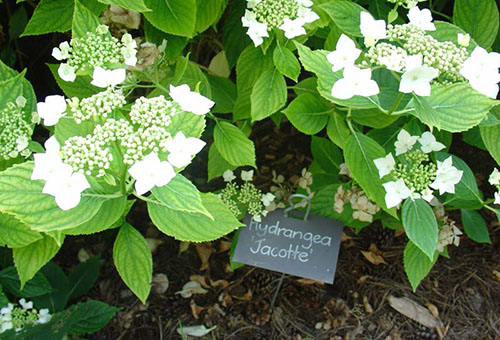
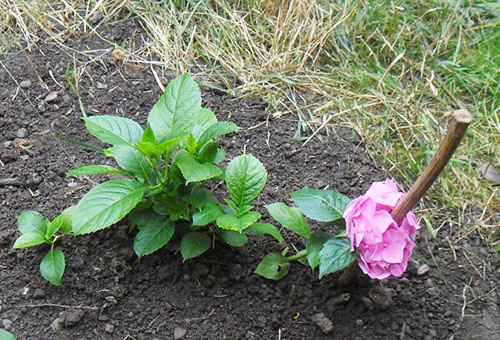
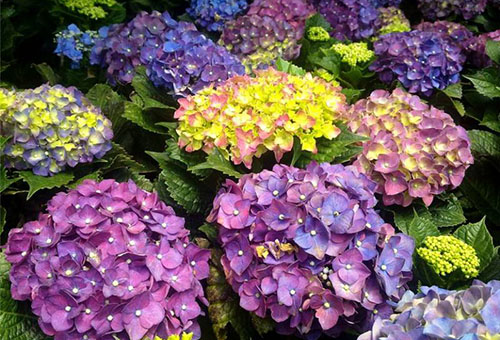
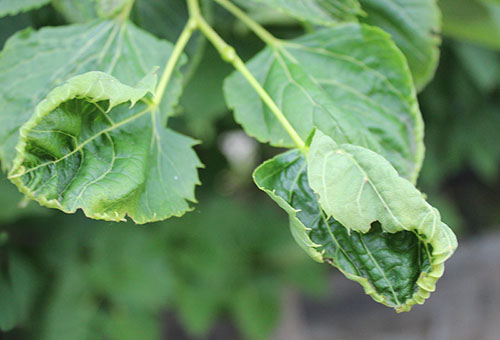

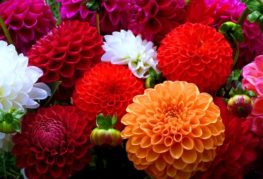
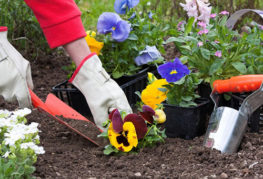
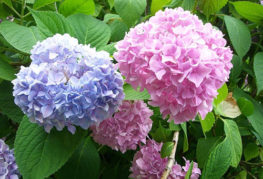
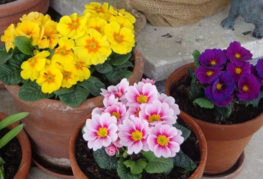

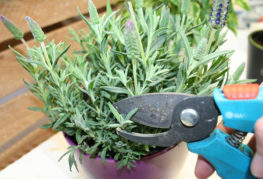
and will be published shortly.